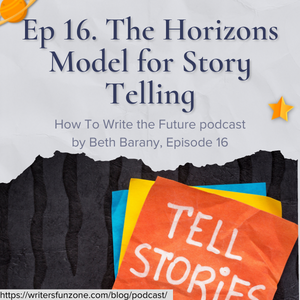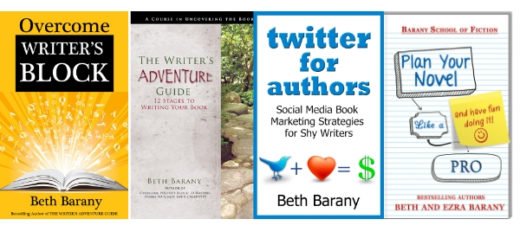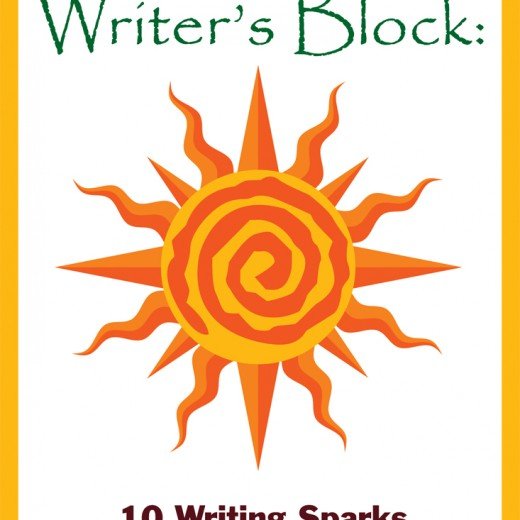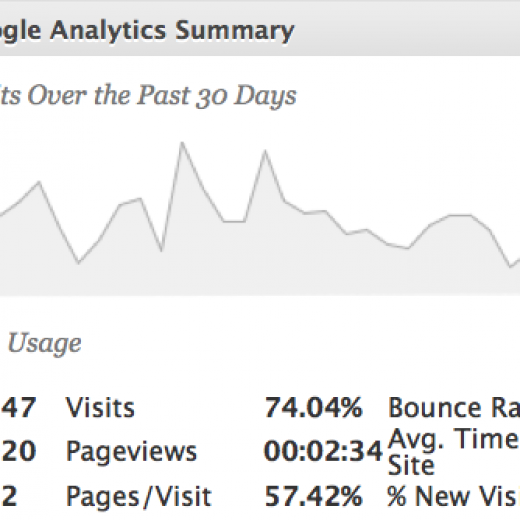The Horizons Model for Story Telling
In this episode creactivity coach and podcast host Beth Barany discusses The Horizons Model for Story Telling and shares insight into what H1, H2, and H3 represents.
Listen to the podcast on: Apple Podcasts | Google Podcasts | Spotify | Buzzsprout | Amazon Music | Podcast Addict | Podchaser | Youtube
ABOUT BETH
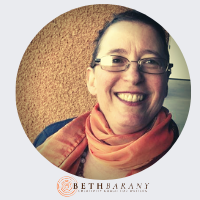
Beth Barany is an Award-winning Novelist, master neurolinguistic programming practitioner, and certified creativity coach for writers, including being a Workshop Leader & Keynote Speaker. Beth has published books in several genres including young adult fantasy, paranormal romance and science fiction.
Learn more about Beth Barany at these sites:
Author site / Coaching site / School of Fiction / Writer’s Fun Zone blog
RESOURCES
Sign up for a Discovery Call with Beth Barany here:
https://writersfunzone.com/blog/discovery-call/
When Is Now? (by Be Smart)
How Do Different Cultures Think About Time?
Interview with Lera Boroditsky at the World Science Festival, 2019
What is your orientation to time? Take this survey to help you understand yourself and other people:
https://www.mindtime.com/mindtime-survey/
SHOW NOTES
“It is really hard to pin down and define the present moment, the present now, even from a quantum physics perspective. Our brain is constructing our present reality, but It is already past.”
In this episode creativity coach and science fiction/fantasy novelist Beth Barany discusses the Horizons Model and explains what H1, H2, and H3 represents including sharing insight into which position she falls into and explains how you can discover which kind of thinker you are.
ABOUT THE HOW TO WRITE THE FUTURE PODCAST
The How To Write The Future podcast is for science fiction and fantasy writers who want to write positive futures and successfully bring those stories out into the marketplace. Hosted by Beth Barany, science fiction novelist and creativity coach for writers.
Tips for fiction writers!
This podcast is for you if you have questions like:
- How do I create a believable world for my science fiction story?
- How do figure what’s not working if my story feels flat?
- How do I make my story more interesting and alive?
This podcast is for readers too if you’re at all curious about the future of humanity.
TRANSCRIPT for 16. The Horizons Model for Story Telling
Today, I want to share a simple but powerful model for you to take into your life and into your stories: the Horizons Model.
Intro
Are you stuck with your story and don’t know how to get unstuck?
Are you a novelist who wishes to be more prolific?
Or maybe you’ve written that first draft and you just don’t know how to make it better.
Then sign up today for a No Obligation Discovery Call with me Beth Barany, Creativity Coach and award-winning science fiction/ fantasy novelist.
I look forward to seeing how I can help you.
So sign up today, the link is in the show notes, and now let’s get on with the show.
Hi everyone, this is Beth Barany. I host the podcast, How To Write The Future. This is a podcast for science fiction and fantasy writers want to create positive, optimistic stories.
Because when we vision, what is possible, we help make it so. This podcast is also for readers who are inspired by thinking about the future and about what could be.
Episode Intro
In this episode, I will share with you about the horizons model that I learned in strategic foresight training at the School of International Futures.
I will explain this model and then talk about some ways that it might be able to help you as a fiction write.
And for all the readers listening this might also help you understand your society, the culture that you live in.
You may notice that society’s seem to privilege things staying the same, by that I mean, a lot of benefits come to us from things being stable.
From the trains running on time; from when you go to the store, you know the shelves have food in them.
You know that when you bring your children to school, the teachers will be there. And the teaching will probably be pretty much what you learn in school. There’s continuity, stability, certainty.
But there are people who want things different, who are working through the system, and outside the system to make things different.
Today, those innovations, maybe they take the shape of self-driving cars to eliminate accidents; vertical and indoor controlled farming to increase yield in smaller spaces using technology to make healthy food without pesticides. Or maybe people are trying to change the system with civil disobedience to call attention to the climate disorder that we humans have caused in our planet, our only habitat.
Also, there are people like Manda Scott who runs Thrutopia, a community of storytellers and other people who want to write stories that envision humanity’s shift from what it is to what it could be in the next 10, 20 or 30 years.
Then there’s also people like Cat Tully, who founded the School of International Futures, who I interviewed in the last episode, Episode 15. She’s been working to bring together the up and coming young people who are working for change in their communities with those working already in the futuristics and strategic foresight domain for many years.
There are many people working in the space, bridging the now with those working on what could be. I count myself in this category.
So I briefly talked about those who want to keep things the same, those who are bridging from now into what could be in the near term, and then there’s a third category, the dreamers, those who want things radically different, often shut down by those who want things to remain the same.
There are some people who want to tear down what is today to make room for the completely new.
For right or wrong, no judgment here, there are those who are striving for us to be a multi-planetary species like Elon Musk and his efforts at Space X, and other people who craft visions of future jobs that don’t exist yet, and who help organizations plan for the future most people can’t envision. Then there are those who see humanity’s future for good or ill or a bit of both.
I see myself also playing in this space with my fiction and my random imaginings.
Today, I want to share a simple but powerful model for you to take into your life and into your stories: the Horizons Model. Cat Tully spoke briefly about it in the last episode, episode 15.
And she taught it to us at the August retreat at the School of International Futures.
For the Horizons Model, picture a timeline in front of you.
On your left is the past.
On your right is the future.
In front of you, is the present, the ever changing, ever moving present.
The Horizons Model breaks these three times– past, present and future– and into three names. H 1 is the past H 2 is the present and H 3 is the future.
I just want to pause for a moment here and acknowledge that not everybody views time, the same way. Not everybody views time from this left to right, past present future, or some people might view it right to Past present future, some people see time completely differently.
And that’s exciting, now, I’m fascinated by time, eventually I’ll do an episode about time.
I think we can say for pretty certain that on this earthly plane, there always exist something that came before and also lives in us, right? Sometimes it feels like the past is happening to us right now.
Any time you remember something from your past, you’re actually re-experiencing it in the present.
So there we have the past and the present mixed up.
And then there’s the now. The now is constantly moveable. Oh, there it goes. The present moment. Boom. It just moved to the past. Now it’s a memory. Oh, look now we’re in a new present moment. Oh, but boom, it moves to the past. But the next present moment that we haven’t experienced is now the future, but wait, no. Now it’s Oh, Nope, Nope Now it’s the past.
I love that stuff. I think it’s hilarious. Fascinating. And so strange.
It is really hard to pin down and define the present moment, the present now, even from a quantum physics perspective. Our brain is constructing our present reality, but it is already past.
I recently watched a wonderful video on trying to understand the present moment from a quantum physics perspective and I’ll have that resource in the show notes.
And even if the past often feels like it’s the present and the present quickly slips away into the past, the future, the future is always out there. It’s always yet to arrive. And there isn’t one future. I know I’ve titled this podcast, how to write the future, but actually there are multiple futures until we experience them and then it becomes the now.
The future will always be undefined.
Now as a futures focused person, I can tell you that it doesn’t matter how many goals I achieve that once I achieved and I’ve celebrated, for a second, I’m always reaching and striving for the next far away mountain, top goal. That’s how I’m wired. That makes me happy. Now notice you may be wired totally differently.
Now, back to our Horizons Model and to our timeline, I said that not every culture sees time as a linear progression, as I mentioned from left to right, or right to left. There are cultures that see time, for example, via a north, south, east, west orientation. And that’s fascinating. I’ve listed in a fabulous interview with Lera Boroditsky, a cognitive scientist where she describes this about a culture that she studied and lived in, and that orientation to time is completely different.
As a storyteller, this really inspires me. What if I have a culture that is oriented that way or some other way towards time? What would that be like? What would that experience be like, especially to an outsider getting adjusted to that kind of orientation.
So I just want to presence that because we may think there’s only one way to perceive time, but actually different cultures perceive time differently.
I recommend that you check out the five minute video.
The link is in the show notes with Lera Boroditsky, a cognitive scientist. It was an interview as part of the World Science Festival from a few years ago.
And I will definitely do a future episode or even a series of episodes about the notion of time.
So why is it useful to study this Horizons Model?
It will help us recognize strengths and weaknesses or benefits and challenges of each one of these orientations past, present, or future. It will also help you notice what is it that you love? Which one of these are you living in and also your biases. And I’ll point those out as we go through.
When you understand this Horizons Model can also help you work with different people on projects, and understand their language and why they might adhere to a certain focus either H one H two H three past present or future. Or some mix of that, and it can help you understand others and it can also help you understand yourself.
And as a storyteller, the applications of this awareness are huge and I will be coming back to this. So let’s dig into the nitty gritty.
H1 – PAST ORIENTATION
“This three Horizons Model is a framework that connects the present with desired futures. Identifies the conflicts between them and explores the divergent futures that may result.”
This is a quote from the School of International Futures curriculum.
In an H one orientation, the benefits and the strengths are stability, predictability, the ability to build systems and organizations to maintain what was, and what needs to remain like roads, power plants, water filtration, rules about healthy food and medicines, for example.
Challenges for this h one orientation oriented towards the past.
People in this orientation can become brittle, intransigent, unable, or hard to change, dismissive of the current and future. And not really paying attention to the needs of the current era or the future areas.
For example, what happens if we don’t upgrade our power plants to handle the changing weather, like heat waves. Those systems will break or they won’t function well.
So the stable structure of society also needs to be focused on the now of maintenance and the future of better, more adaptable models of power generation.
What could those be?
For example, we know many of them. If we have better batteries for solar and wind generation, they can release excess electricity when the sun isn’t shining or the wind isn’t blowing. So they could better handle peak electrical needs in cities between 4 and 9:00 PM.
Another example would be using ocean waves for electrical generation. Something that’s now in trials, very exciting. Electricity generated in this way could practically be limitless in inhabited coastal regions, which is a big part of the planet.
H2 – Present day, current orientation
What are the benefits or strengths to having a present day, current orientation?
People in organizations oriented this way are great at handling what’s in the now. They tend to be practical, hands-on solution oriented, grounded in the doing. Not in the dreaming.
Some challenges or weaknesses of the present day current orientation are: you could be very shortsighted. Not looking very far into the past or the future, not taking lessons from the past. Also little or no planning for the far future.
So here’s an example. Many people who are oriented in the present are super fascinated by the best tech, toys that come out. For example, the latest phone or the latest car, the latest TV or the latest computer. It’s really fun. It’s exciting. Right? When the new thing comes out, but they aren’t necessarily thinking about what happens when this gizmo breaks, the need to replace it.
The fact that the toy or the TV or the computer goes into waste system and may or may not get recycled and be a part of the building waste on this planet.
People with this type of shiny object syndrome feed the consumer focused economy and takes no care in what is happening to the environment or how much our buying of things impacts how were tearing down the environment where we live. And we’re not replenishing, or rejuvenating nature from where we are taking all these resources.
On the other hand, people in institutions that are focused on taking care of today’s problems are very good at often taking care of acute problems.
So take for example, the health care system. If you break a leg or get an accident of some kind, you can go to the emergency room and get taken care of. If there’s a problem, you can get surgery for some.
But some of the short-sightedness of it doesn’t allow them, for example, in healthcare to take advantage of wisdom from the past, or even think about how to look at healthcare completely differently and change it for the future.
H3 Future Orientation
So now let’s move on to H three future orientation.
We looked at the past, we looked at the present. H one and H2. Now let’s look at the future.
People and institutions oriented toward the future– some of their benefits and strengths are, they’re really great at planning, planning for worst case scenarios, planning for best case scenarios. Really open to possibilities.
Also very comfortable with the unknown and the unseen. Also very comfortable with asking What If and playing with all the different options that arise.
Some of the challenges or weaknesses of this future orientation is you can be stuck in the dreaming phase and never take action.
Also, you might ignore what has worked in the past or what is currently working as you start dreaming about the future and what could be.
People and institutions oriented in this way could be looked at as impractical.
How do you help people on the planet now, when you’re focused on planning space probes that won’t even launch for another 5, 10 or 15 years? And won’t even have answers for us for much longer than that.
The space agencies oriented in this direction, NASA, ESA, JAXA. The Chinese space industry. They’re all interested in finding out what’s out there. But it takes a long time to prepare a space telescope, like the James Webb space telescope. They’re even planning the next generation telescope. That’ll take a long time to plan it, build it, launch it. And we have people in these industries focused on this.
A lot of people want to dismiss what the space agencies are doing, because they’re wondering how can it benefit us here and now.
But you’ve probably heard and know that our cell phones and our computers that you’re probably using to listen to this episode wouldn’t even exist if it weren’t for the space program. The space industry focused on miniaturization, computer chips, and so much more.
And all of this exists today and it benefits us in so many ways because of these future oriented thinkers, dreamers and planners.
The downside of being oriented in the future is that you can be frustrated when things don’t come to fruition quickly. I have that experience.
Luckily, I also have a lot of present time orientation to help me get the next thing done and then the next thing done, and then the next thing done. This is how I’m able to be so productive.
And what I noticed about organizations that are focused on the future survive because they have believers, people who believe in the benefits that will come. And also they have support from people who also help connect the future oriented work with the needs of today.
Where do you see yourself? Are you an H1, H2, or H3 thinker?
So, where do you see yourself in one of these three positions or maybe a mix?
Most people are a mix. Are you very past oriented? Are you very present oriented? Are you very future oriented? I would bet a lot of people listening to this are very future oriented because of the name of the podcast, How to Write The Future.
And to help you figure out what is your orientation I have a link in the show notes from a wonderful website called mindtime dot com, which invites you to take a test or a quiz, or maybe it’s more of an assessment to see where you’re oriented.
I was introduced to this assessment at mindtime.com by the School of International Futures, which is where I also learned about the Horizon Model and some of its uses in strategic foresight.
So today I went through the Horizons Model that futurists and strategic foresight practitioners use as one of their tools in their toolkit.
OUTRO
Write long and prosper.
Science fiction and fantasy writers, if you would like one on one support in dreaming up your storyworld or dealing with a knotty creative process issue, reach out for Discovery call, and I will help you find a customized solution just for you.
Loved this episode? Leave us a review and rating here: https://www.buzzsprout.com/2012061
or in your podcast home of choice.
ABOUT BETH BARANY
Beth Barany is an award-winning novelist, certified creativity coach for writers, and a workshop facilitator. In addition to her how-to books for writers, Beth has published books in several genres including young adult fantasy, paranormal romance, and science fiction mystery.
CONNECT
Contact Beth: https://writersfunzone.com/blog/podcast/#contact
Email: beth@bethbarany.com
LinkedIn: https://www.linkedin.com/in/bethbarany/
***
CREDITS
EDITED WITH DESCRIPT: https://www.descript.com?lmref=_w1WCA
MUSIC: Uppbeat.io
DISTRIBUTED BY BUZZSPROUT: https://www.buzzsprout.com/?referrer_id=1994465
c. 2022 BETH BARANY
***
For more “How To Write the Future” episodes, go here.
If you’d like to invite Beth onto your podcast, drop her a note here.

